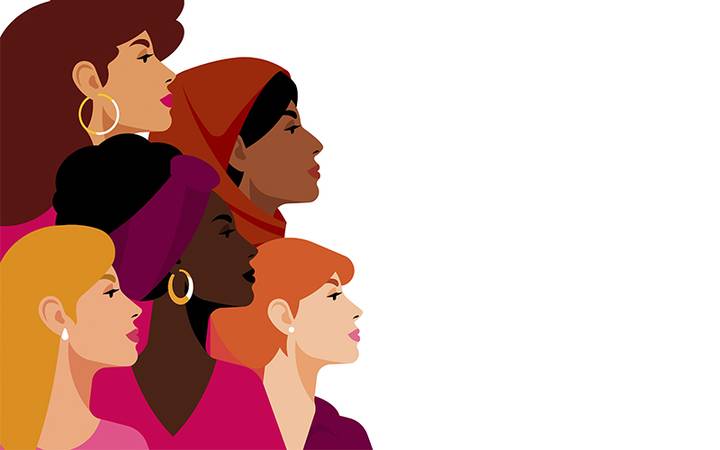Discover the history of the celebration of International Women’s Day and the importance of this date for all women:
It’s no secret that March 8th is a very important date for women around the world. This is because this date was marked as the International Women’s Day, an important day to discuss sensitive issues involving women’s rights.
Therefore, the date is much more than a celebration. It also celebrates several female achievements so far, in addition to serve as a warning about gender problemswhich are still so current in modern society.
So, are you curious? Stay with us and learn more about this important date! Good reading!
What is the origin of International Women’s Day?
International Women’s Day has its roots in social movements and women’s historic struggles for equality, justice and rights. One of the first demonstrations that led to the origin of this date dates back to the beginning of the 20th century, when women in several countries, especially in the United States and Europe, began to protest for better working conditions, the right to vote and equal pay..
The most recognized landmark is the fire that occurred on March 25, 1911, at the Triangle Shirtwaist factory in New York, when little more than 100 workers died in precarious working conditions.
From these events, the movement for gender equality gained strength and, in 1910, during the Second International Conference of Socialist Women, held in Copenhagen, it was proposed to create an international day to celebrate women’s achievements and promote gender equality. rights.
It was only in 1917, in Russia, that the date of March 8th was made official as International Women’s Day, after a women’s strike demanding “bread and peace” during the First World War.. This event was fundamental in consolidating the date as a symbol of women’s fight for equality and social justice around the world.
Therefore, since then, International Women’s Day has been marked by protestsmarches, conferences and events around the world, highlighting issues such as gender-based violence, pay gaps and political participation.
Controversies about the date
For a long time, March 8th It was associated with a huge fire that happened at the beginning of the century, when dozens of workers died. However, the incident happened on March 25, 1911. It killed 125 female workers and 21 men.
The fact is that there is no absolute agreement on the origin of the date that celebrates International Women’s Day. This is because there were several demonstrations all over the world. However, the most accepted origin currently is that March 8th was only formalized as Women’s Day after the 1917 strikeof Russian women.
Therefore, the strike began on February 23 according to the Julian calendar, which was the one used in Russia at that time. This is the date that corresponds to March 8th on the Gregorian calendar.
How and when was International Women’s Day made official?
As we saw above, the idea of having a commemorative date to celebrate women has existed since the beginning of the last century. However, It was only after the Second World War that March 8th gradually became the date in honor of women.
In the 1960s, March 8 had already traditionally become International Women’s Day. However, it only became official in 1975, when the UN declared the International Year of Womenand launched a campaign focused on combating gender inequalities and discrimination around the world.
Therefore, as part of these efforts, March 8th officially became International Women’s Day.
How important is this date?
International Women’s Day is a significant occasion that recognizes and celebrates the achievements, contributions and struggles of women throughout history. It is a powerful reminder of the ongoing need to promote gender equality and combat all forms of discrimination and oppression faced by women around the world.
This day not only highlights the individual achievements of women in diverse fields, but also serves as a call to action to address urgent issuessuch as pay gaps, gender violence, and much more.
International Women’s Day is not a date for banal tributes to women. This date carries a very important symbolism that goes beyond any triviality. The date marks an important reflection on how society views and treats women, whether in the social, emotional field and also in the job market.
As it is no secret to anyone, even though we are moving towards improving things, the truth is that women still suffer from a lot of inequality in the job market compared to men. Besides the salary discrepancy between men and women who perform the same position, as women receive an average of 20% less.
All research and statistics show how gender bias negatively affects women within the job market. As if not enough, Women also suffer from gender-based violence and abandonment, not to mention high rates of feminicide.
Therefore, March 8th, International Women’s Day, is a date for everyone to reflect on these issues, all the inequality and violence that women suffer, not only in Brazil, but throughout the world.
So, in addition to celebrating women’s lives, it is also time to combat these prejudices and rethink the attitudes that contribute to this unequal and prejudiced society.
Why is the symbol of Women’s Day purple?
In the context of the feminist movement, purple is used to symbolize women’s fight for equality, dignity and respect. It represents the unity of women around the world in the fight against discrimination, gender-based violence and social, economic and political inequalities.
Furthermore, purple is also a color that refers to creativity, wisdom and independence, characteristics valued in female empowerment.
Purple is also historically associated with the suffrage movement, which sought women’s right to vote. In the early 20th century, suffragettes in Britain adopted purple as one of their symbolic colors, along with white and green.
Purple represented dignity and loyalty to feminist causes. This historical association with suffrage and the fight for women’s political and civil rights helped solidify purple as an emblematic color of the feminist movement and International Women’s Day.
Thus, purple continues to be used as a powerful visual representation of resistance, solidarity and the quest for equality and justice for women around the world.
So, did you enjoy learning a little more about the history of this important date? Enjoy and also read: Female empowerment films – 14 recommendations to see and learn
Sources: Dia a Dia Educação, BBC, Toda Matéria Brasil Escola

Sign up for our newsletter and stay up to date with exclusive news
that can transform your routine!
Warning: Undefined array key "title" in /home/storelat/public_html/wp-content/plugins/link-whisper-premium/templates/frontend/related-posts.php on line 12
Warning: Undefined array key "title_tag" in /home/storelat/public_html/wp-content/plugins/link-whisper-premium/templates/frontend/related-posts.php on line 13




